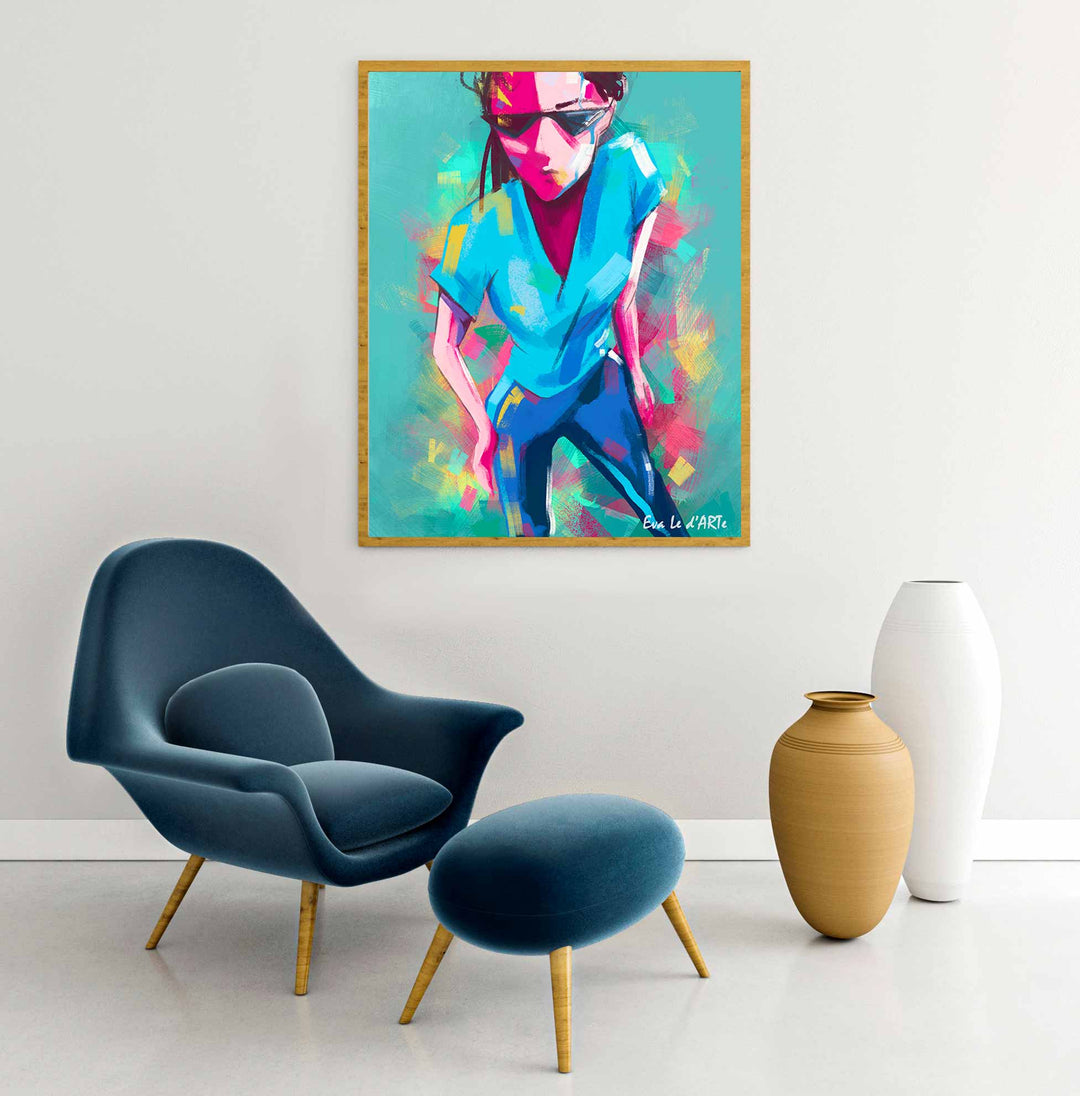How Figurative Oil Painting Changes Standard Artistic Expression
How Figurative Oil Painting Changes Standard Artistic Expression
Blog Article
The Function of Emotion and Expression in Figurative Oil Painting: An Extensive Analysis of Topic Matter and Make-up
The interplay of emotion and expression in metaphorical oil painting offers as a crucial lens via which one can take a look at the elaborate relationship in between subject matter and make-up. Artists harness numerous methods, from shade selection to brushstroke dynamics, to grow emotional resonance within their works.
Understanding Feeling in Art
Emotion in art serves as a powerful channel for expression, enabling artists to share complex sensations through their job. In figurative oil paint, this psychological depth is commonly depicted via the depiction of the human number, catching the subtleties of human experience. The choice of subject, shade palette, and brushwork all add to the psychological vibration of a piece.
Artists often bring into play personal experiences, societal problems, or global motifs to stimulate sensations in the viewer. For example, a portrait may show susceptability, while a dynamic figure in movement can symbolize flexibility or chaos. These emotional threads connect the viewer to the artwork, promoting a dialogue that transcends the visual medium.
Additionally, the interaction between light and shadow can enhance psychological strength, leading the customer's look and drawing interest to particular components within the make-up. Making use of texture in oil painting further adds layers of intricacy, inviting a tactile response that enhances the psychological experience. On the whole, recognizing feeling in art is critical for valuing the nuances that define figurative oil paint, as it changes plain representation into an extensive exploration of the human condition.
Secret Elements of Make-up
In the realm of metaphorical oil painting, the composition acts as the underlying framework that arranges aesthetic elements and boosts the psychological story. Important components of make-up consist of balance, comparison, centerpiece, and rhythm, each adding to the overall influence of the art work.
Equilibrium refers to the circulation of visual weight within the painting, which can be accomplished through unbalanced or in proportion arrangements. A healthy composition offers stability, allowing the viewer to involve with the piece sympathetically - figurative oil painting. Comparison, on the other hand, includes juxtaposing various aspects, such as dark and light or warm and cool colors, to guide the customer's eye and stimulate psychological actions
The focal point is essential, as it guides focus to the most substantial part of the painting, often highlighting the psychological core of the narrative. Through strategies like shade saturation or positioning, musicians can stress this area properly. Finally, rhythm relate to the repeating of components, creating a sense of motion and circulation throughout the composition. By masterfully incorporating these crucial elements, musicians can craft mentally resonant and compelling metaphorical oil paints that astound and involve their audience.
Subject and Its Impact
Subject matter plays a critical function in figurative oil painting, as it not only works as the structure for the story yet additionally forms the visitor's analysis and psychological engagement with the art work. The option of subject-- be it a singular figure, a group dynamic, or a thematic representation-- directly affects the psychological environment conveyed to the target market.

For instance, portraits commonly evoke individual connections, disclosing the ins and outs of human expression and character, while scenes illustrating communal tasks can create a sense of belonging or fond memories. The social and historical context of the subject matter enhances the customer's understanding, motivating deeper reflections on societal standards, worths, and the human problem.
Various subjects likewise generate varying degrees of engagement; a significant problem portrayed via figures in stress may generate sensations of anxiousness or empathy, while peaceful landscapes can conjure up peace and reflection. Ultimately, the effect of subject in metaphorical oil painting is profound, as it serves as a conduit for psychological vibration, guiding the viewer's reaction and analysis, and fostering a link between the artwork and the observer. This interplay is necessary for the successful communication of the artist's intent.
Methods for Stimulating Sensations
The performance of metaphorical oil paint in communicating feelings is dramatically affected by the methods used by the artist. One of one of the most essential approaches is making use of color concept, where the strategic choice of shades can stimulate certain psychological actions. Warm colors, such as reds and oranges, typically elicit feelings of passion or aggressiveness, while cooler tones like blues and environment-friendlies often tend to stimulate calmness or sadness.
Another essential technique is the adjustment of light and darkness, called chiaroscuro. This technique improves the three-dimensionality of figures, creating significant contrasts that can escalate emotional depth. The placement of light can the original source guide customers' feelings, highlighting particular aspects of the make-up.
Brushwork additionally plays a critical function; loose, meaningful strokes can communicate energy and spontaneity, whereas smoother methods could recommend serenity or accuracy. Furthermore, the plan of subjects within the make-up can influence psychological effect. Close distance can suggest affection, while distance might show seclusion.
Eventually, the combination of these techniques enables musicians to craft narratives that resonate with the viewer, transforming a mere visual experience right into an evocative psychological journey. - figurative oil painting

Study of Remarkable Works
Checking out notable jobs of metaphorical oil paint reveals how various methods are used to stimulate effective emotions. One excellent instance is Edvard Munch's "The Scream," where the altered figure and swirling history share existential dread. Munch's use shade-- deep blues and vivid oranges-- magnifies the emotional impact, showcasing exactly how scheme selections can form viewer experience.
One more considerable work is Pablo Picasso's "Les Demoiselles d'Avignon." Here, bold brushstrokes and fragmented forms reflect a turbulent psychological landscape, testing standard representations of the female number. Picasso's cutting-edge make-up not only catches the audience's attention however also welcomes reflection on motifs of identity and sexuality.
Additionally, Frida Kahlo's "Both Fridas" uses a touching exploration of duality and self-identity. The different figures, linked by a shared heart, exhibit Kahlo's psychological deepness and individual story. figurative oil painting. Her careful interest to detail and symbolic aspects offer to involve audiences on a visceral degree
These study underscore the profound link in between emotion and make-up in metaphorical oil paint, exposing how musicians harness strategy to communicate intricate feelings and narratives that resonate throughout time and society.

Verdict
Finally, the interplay of emotion and expression in metaphorical oil painting substantially improves the customer's experience and analysis of the artwork. go to this web-site With a careful selection of subject and compositional techniques, artists share extensive narratives that resonate on both universal and personal degrees. The application of shade chiaroscuro, concept, and brushwork further magnifies psychological depth, transforming each canvas into an effective representation of the complexities of the human experience.
In metaphorical oil painting, this emotional depth is frequently portrayed with the representation of the human number, recording the subtleties of human experience.Additionally, the interplay between light and shadow can intensify psychological intensity, leading the audience's look and drawing focus to certain components within the make-up. The use of texture in oil paint better includes layers of complexity, inviting a responsive action that boosts the psychological experience.The focal factor is crucial, as it routes focus to the most substantial component of the paint, typically highlighting the psychological core of go to this site the story. Eventually, the impact of subject issue in metaphorical oil paint is extensive, as it offers as a channel for emotional resonance, assisting the viewer's response and analysis, and cultivating a connection between the observer and the artwork.
Report this page